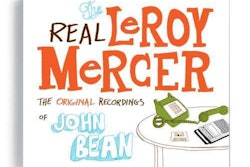Our past holds valuable lessons about the intersection of government and economics
How good is the nearly $800-billion so-called stimulus package? If it affects you positively, it’s good. If you see no change in your personal situation or it grows worse, it’s not so good. In the next few months, that is how the government spending effort will be judged in truckstops over coffee, across the CB airwaves and in Internet chat rooms.
But its impact collectively on America will be judged from 40,000 feet only when enough time has passed to allow a proper historical analysis. Emotions of the moment and political biases cloud realistic perspectives.
If history is any indicator, we could have a long road ahead. Past stimulus measures have offered short-term boosts to the public’s psyche, but they only “propped up” the root causes of the problem and delayed recovery.
Taking the Great Depression as a case study, one can easily find both good and bad in the New Deal. That stimulus created some short-term relief to millions of unemployed Americans. A visit to any number of state and national parks bears witness to government-sponsored projects completed by the Civilian Conservation Corps. Many roads and bridges were built by Works Progress Administration workers.
Today, many people believe these projects, along with numerous social programs, ended the Great Depression. Many people also believe the idea of government stimulus to counter economic hard times was started by President Franklin Roosevelt. Actually, his immediate predecessor, Herbert Hoover, earns that distinction. Hoover attempted to stimulate failing banks with the establishment of the Reconstruction Finance Corporation in 1931.
Roosevelt tried numerous New Deal policy changes during his first two terms only to fare no better than Hoover. In fact, average working hours per employee fell more than 20 percent and stayed there until World War II. And per capita consumption and per capita nonresidential investments, which were most needed for an economic recovery, remained stagnant.
In a February New York Times op-ed piece, economists Harold L. Cole and Lee E. Ohanian argue “economic fundamentals that drive all expansions were very favorable during the New Deal,” and like previous downturns, a vigorous recovery should have followed.
What stopped it? According to Cole and Ohanian, it was the New Deal itself. “Some New Deal policies certainly benefited the economy by establishing a basic social safety net through Social Security and unemployment benefits and by stabilizing the financial system through deposit insurance and the Securities and Exchange Commission,” they write. “But others violated the most basic economic principles by suppressing competition and setting prices and wages in many sectors well above their normal levels. All told, these anti-market policies choked off powerful recovery forces that would have plausibly returned the economy back to trend by the mid-1930s.”
Amity Shlaes makes a similar argument in her book The Forgotten Man. And we heard the same sentiments concerning the current stimulus proposal echoed recently by Wachovia economist Mark Vitner at NATSO’s annual truckstop industry convention. He forecasts the recession to end by late this year or early next year, before the stimulus monies really kick in.
So what government policies finally ended the Great Depression? Tyler Cowen, a professor of economics at George Mason University, writes in an unrelated Times op-ed article: “In short, expansionary monetary policy and wartime orders from Europe, not the well-known policies of the New Deal, did the most to make the American economy climb out of the Depression. Our current downturn will end as well someday, and, as in the ’30s, the recovery will probably come for reasons that have little to do with most policy initiatives.”
It seems we again have not learned from our past. We want a quick fix, and tragically that appears to be what the government is trying to do. We have no doubt this downturn will turn up, but when and at what cost? Only time will tell.









